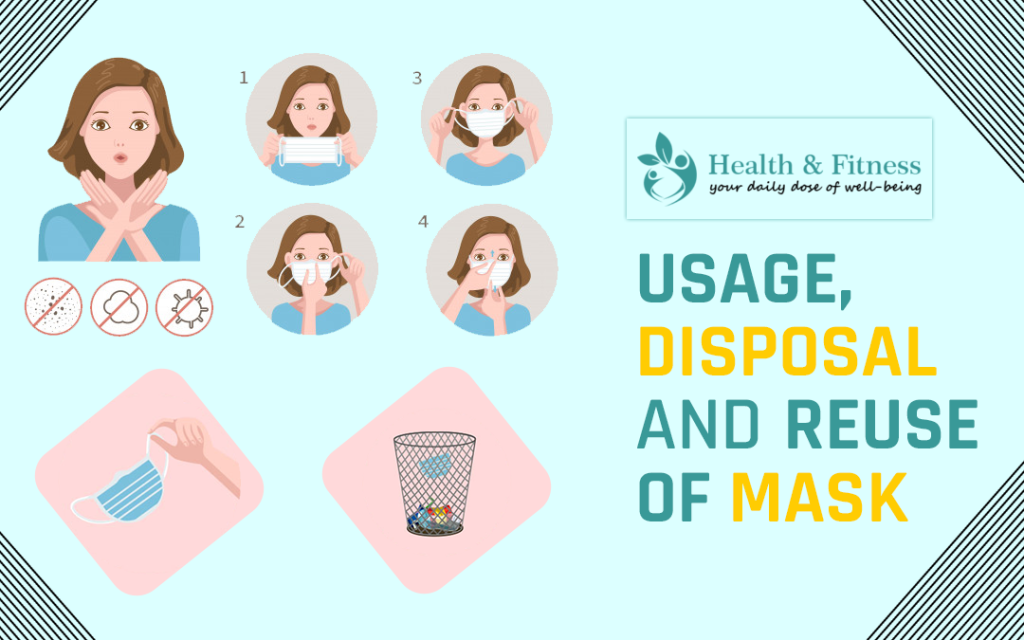Since the emergence of Coronavirus, this is also called COVID-19, it has spread immensely throughout the world. While some of the COVID-19 sufferers have mild illness, others may experience difficulty in breathing, pneumonia, failure in respiration. The most targeted age groups of this pandemic are older ones and kids. To prevent the infection, you may have heard lot about the usage of face masks.
When and how to wear the masks?
• Wear a mask if you are having cough or you are sneezing.
• Masks works efficiently only when they are used with often hand-cleaning with sanitizers that includes alcohol with soap.
• If you are healthy, then you are required to wear masks while taking care of a person who is COVID-19 suspected.
• Cover your nose and mouth with mask and ensure that there is no space left between your mask and face.
• While using the mask, avoid touching it. If you have touched the mask then clean your hands with sanitizer or soap.
• Replace the mask with newer one when it damp, do not re-use the one-time use masks.
• To remove the mask, remove it from backside. Dispose it instantly in a bin then clean your hands with soap or alcohol-based sanitizer.
Coronavirus Masks: Types of face masks
Three types of COVID-19 prevention masks
- homemade cloth face mask
- surgical mask
- N95 respirator
Read what WHO advice on the use of masks.
Homemade cloth face masks
In order to prevent the spread of virus amongst people, Government has mentioned the method of social distancing. However, at the public places it is not easy to keep a distance of 6-feet from others. The Centers For Disease Control and Prevention(CDC) has recommended wearing a cloth face mask .
Benefits of Homemade masks
- These masks can be made at home with common material available at home, so there is unlimited supply of the material.
- When social distancing is not easy to maintain, these are at least better than not to wear the mask.
- These home made masks can reduce the risks of people without the symptoms, transmitting the virus by coughing, speaking or sneezing.
Risks associated with homemade masks
• Although these homemade face masks offer some protection, they can provide the fake security. They offer less security than the surgical masks. It can be said that these masks are up to 50 times less effective than N95 respirators.
• The homemade masks do not eliminate the requirement of other protective measures. Proper hygiene and social distancing are best to keep yourself safe.
Surgical masks
Surgical Masks are loose-fitting, disposable face masks which covers your mouth, chin and nose. These masks are used to:
- Suppress the spread of infectious respiratory secretions from the wearers to others.
- Safeguard the mask wearer from sprays, large-particle droplets and splashes.
These masks are different in designs, these are rectangular with folds or pleats. The top part of the mask consists of metal strip which can be formed to your nose.
The elastic bands and the straight ties help to hold the surgical masks in the place when you are wearing it. These masks can be tied at the back of your head or can be looped behind the ears.
N95 respirators Masks
The N95 respirators are more tight fitting face masks. These respirators can filter-out 95% of small particles, in addition to splashes and sprays. These also filter viruses and bacteria. This respirator is circular and oval in shape and is designed to tight seal your face. The elastic bands present in N95 respirators help to hold these firmly to your face.
Some of the N95 respirators have an attachment that is called exhalation valve that helps in breathing and building up the humidity and heat. These respirators fit for all. These must be tested before using to ensure that the proper seal is formed. You will not receive the appropriate protection, if the mask does not seal efficiently to your face.
After being fit-tested, users of N95 respirators must continue to perform a seal check each time they put one on. It’s also important to note that a tight seal can’t be achieved in some groups. These include children and people with facial hair.
Read more about when and how to use masks.



Pingback: Manjit
Pingback: Christna
Pingback: Sam